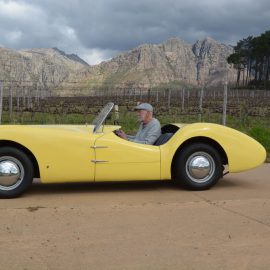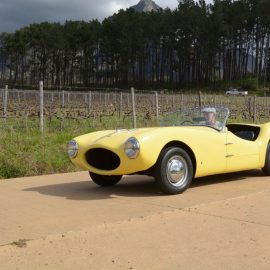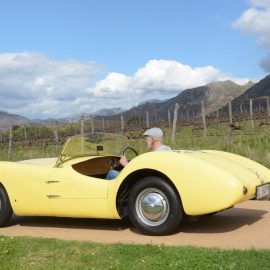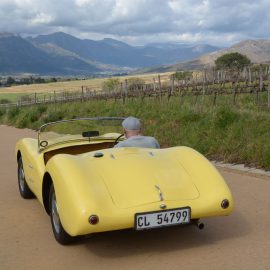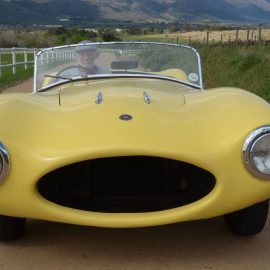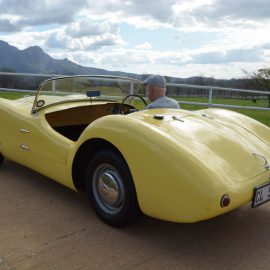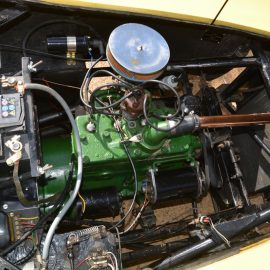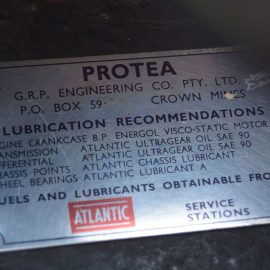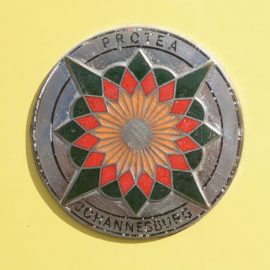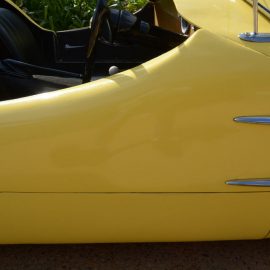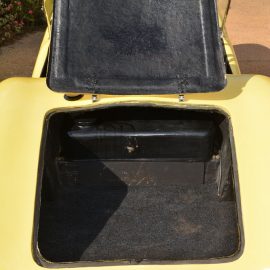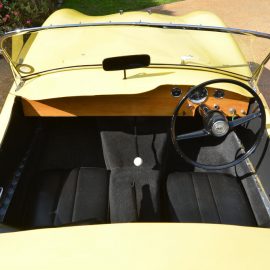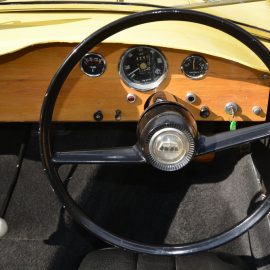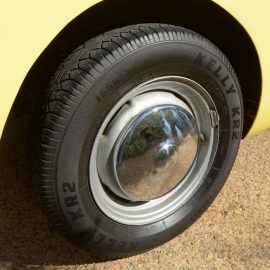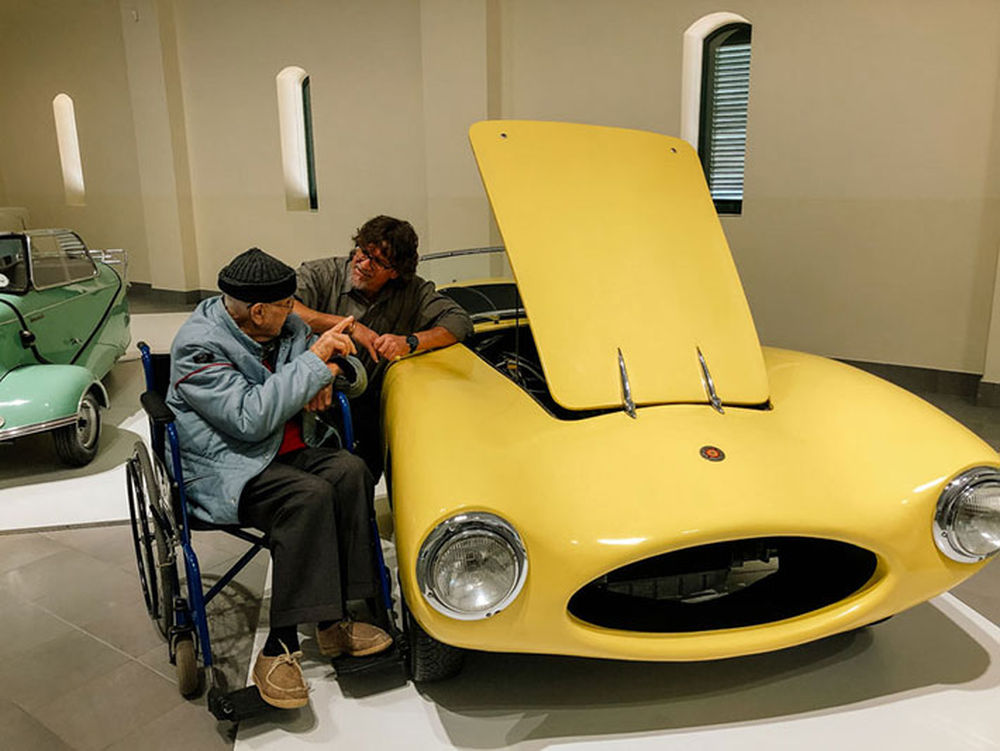
07 Oct Collection in action: Protea
One of the driving forces behind the car named after South Africa’s national flower, the Protea, was John Myers, who passed away on September 1, aged 97. He was a remarkable individual, and as a tribute to him, Mike Monk gets behind the wheel of chassis no.4, and together with Wayne Harley share a couple of memories of a lost friend…
The Protea was the first of a number of South African-developed production cars over the post-war years, the backgrounds to which have been well-documented elsewhere. There is no real argument that the most famous of these home-brewed motor vehicles was the GSM Dart, but this iconic sports car was not the first. It was just beaten to pole position by the Protea, which was developed on the Witwatersrand by a trio of enthusiasts, namely Dr Alex Roy, John Myers and Bob Fincher.
The concept was to produce a sports car ‘for the enthusiast’; Myers and Fincher developed the ladder-frame chassis and tubular spaceframe while Roy was mainly responsible for the design of the glass fibre body, the mould of which was made on a framework of timber and chicken wire layered with plaster of Paris. Suspension was independent up front and the rear axle was located by equal-length trailing arms and a Panhard rod. Coils springs and telescopic dampers were fitted all round. The running gear was all Ford 100E, except the worm-and-roller steering box that was mounted upside down to quicken the steering ratio.
John was the only team member to work on the project full time and lived in the flat above the workshop in Booysens. “We used to put in about 16 hours a day working. It was a dream, we had the dream but we knew we couldn’t keep on with it. We were all bachelors at the time, working all hours of the night; we couldn’t do that when we got married,” John is quoted as saying.
The Protea was powered by the Ford 100E 1 172 cm3 engine and gearbox, in this application positioned 200 mm behind the front axle line, but the three forward ratios were less than ideal because the cars were lighter than an all-metal 100E saloon. Nevertheless, 136 km/h was achievable and 0-96 km/h took 14,5 seconds. A Willment overhead inlet/side exhaust valve cylinder head conversion upped power from 27 kW to 52 kW, and a close-ratio gearbox with the option of a Murray mechanical overdrive operating on all the gears – including reverse – could be fitted, all of which helped propel the Protea to over 150 km/h.
The prototype took six months to complete and it appeared at the Milner Park Motor Show in 1956. Husband and wife business owners Robert and Miriam Hudson were so taken with the car that they donated £10 000 to the company to help with production start-up. According to Protea expert Leon Joubert, 14 cars were built with the 100E engine, plus a similar number with other engines and/or bodies lengthened by 180 mm for mounting on a VW chassis. The basic list price was £659.
On the racing front, an extra car was built with a Triumph TR2 engine for John Mason-Gordon, and the two Johns raced at and won the 1959 Pietermaritzburg 6-Hour at the Roy Hesketh circuit, leading from start to finish.
Sadly, lack of funds prevented the company, GRP Engineering, from surviving and production ceased at the end of 1958. In addition, apparently GRP did not have customs duty clearance certificates for the cars it was building, which did not go down well with the Receiver of Revenue. Incidentally, GRP stood for Glass-Reinforced Plastic, a.k.a. glass fibre, because the name Protea was already another company’s trade-mark so could not be used, but did not prevent the car being named.
FMM is the proud owner of Protea chassis No.4, one of the few cars that were bought initially for the intended purpose of racing. It was first sold to a university student named Robbins for whom John had modified the engine and fitted a Buckler close-ratio gearbox. Robbins and a team of students raced the car in the 1958 6-Hour at Hesketh but was retired after oil pressure problems led to big-end bearing failure.
In later years, No.4 was owned by Piet Bezuidenhout and fitted with a Borgward engine in 1967. It then moved on to another owner who fitted it with a Volvo engine before Bert Broune bought the car and stored it for 20 years. However, the Heidelberg Motor Museum, the foundation of FMM, acquired the car in 2000 in near-original condition.
Being tall and long-legged, I was surprised at being able to fit in the Protea as there is no seat adjustment, so although a tight fit I was able to enjoy its pleasures. It never ceases to amaze how something that is as relatively simple in design and construction as the Protea can provide such an enjoyable driving experience. Not everyone gets it right first time, but this car delivers the goods. It weighs around 750 kg, which combined with good roadholding and steering response, makes the car light, nimble and predictable. Many years after the car had ceased production, a computer analysis of the chassis revealed that the team had created a near-perfect design.
It’s not what you do but the way that you do it, and sitting close to the tarmac with right-arm over the side and the wind rushing around the open cockpit, the experience immediately enjoyable. The powertrain may be unsophisticated, but sheer power is not the be-all end-all of sporty motoring. All of the controls are light in operation and the gear lever slots into the gate without fuss, and the brakes are well up to their task. It really is a shame that the Protea did not become production viable in the way that the GSM Dart did. We can only wonder what such a rivalry would have led to…
“John Myers was a proper gentleman and one of the dearest people I’ve had the honour of meeting’” says FMM Curator Wayne Harley. “He was a treasure chest of knowledge with a memory that was so clear and sharp. I used to enjoy his stories and great sense of humour. I believe I also had the honour and privilege of being the last person to have ever driven with John in a Protea. It was a day I remember well as he spent a fair amount of time telling me exactly what was wrong on the museum’s Protea. Every now and then he would pay us a visit to check up on us to see if we had attended to the issues he mentioned on his ‘snag list’. I will miss his visits and phone calls.”
“For the car’s 60th anniversary they came and took me off to the Franschhoek Motor Museum. They took the car out of the showroom and gave me a ride in it because they have a little track, and that was lovely,” John is quoted as saying at the time.
On another personal note, John was an established member of the Crankhandle Club in Cape Town and always attended the monthly seniors meeting, often contributing some anecdotal input to the presentation being made. Possessed of an incredible memory, he kept a small library of photo albums and memorabilia, every item of which came with a tale. John was an avid reader and I was always amazed that after each FMM newsletter and/or a copy of the (sadly no more) Classic Car Africa magazine appeared, I would get a phone call starting with “Have you got a minute?” before he launched into a detailed yarn based around something I had written. Never boring, always astute and usually related with a touch of wry humour, John would add flesh – and clothes – to the skeleton of any motoring story.
His tales of what he did during the war years had particular interest for me because as a 17-year-old he was apprenticed at Daimler in Coventry, England, which is where I was born, so I was able to relate to his descriptions of what took place, his recollections of the bombing raids in particular. He took part in the war as a volunteer with the South Wales Borderers, the area where my wife Wendy was born.
For anyone interested in John’s fascinating career, logon to the still active Classic Car Africa website and call up the September 2016 issue of the magazine, where you will find a superb story of his life written by Graeme Hurst.
The full story of the Protea’s conception, development, manufacture and fate is given in Ian Schwartz’s book ‘Protea: The Story Of An African Car’, which is available from FMM for R200 excluding any postage and packing. A review of the book appeared in the June 2020 FMM newsletter.




